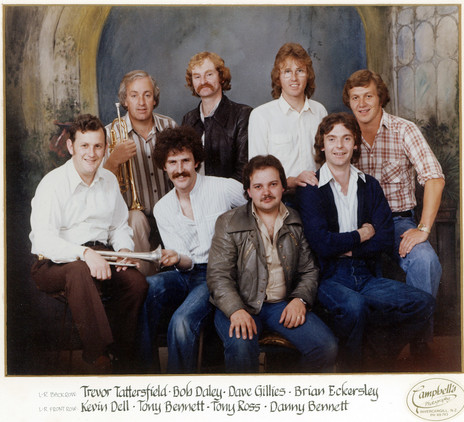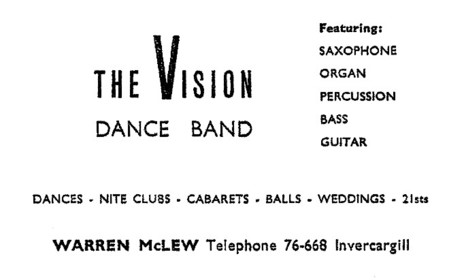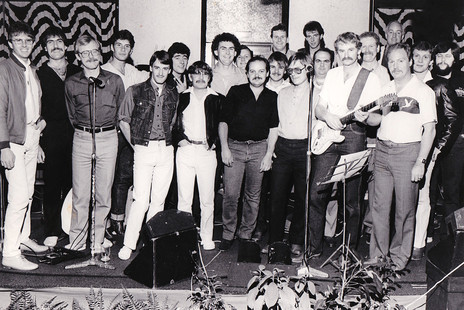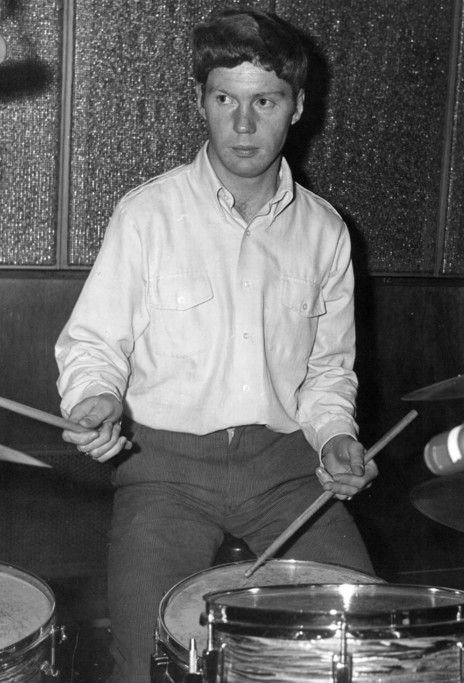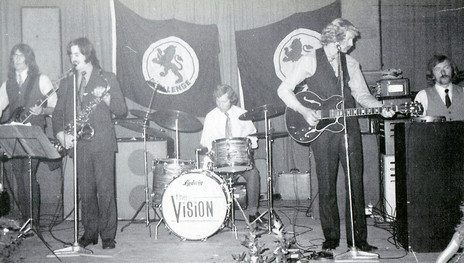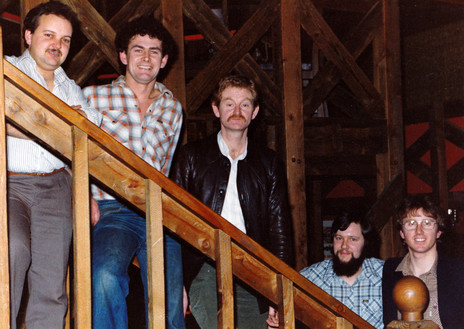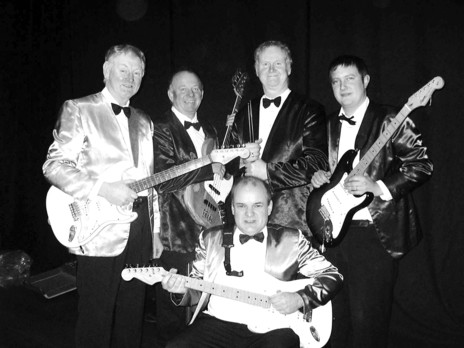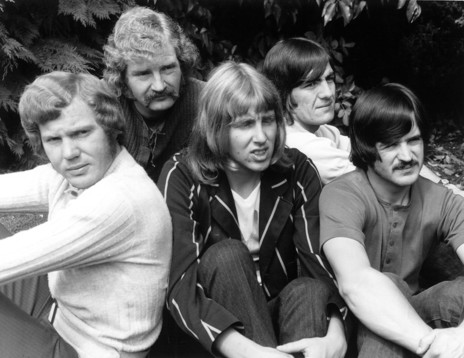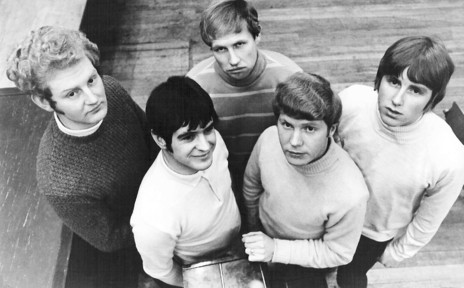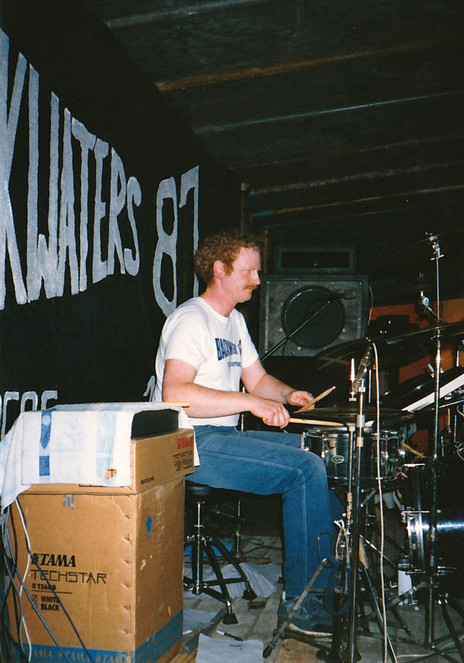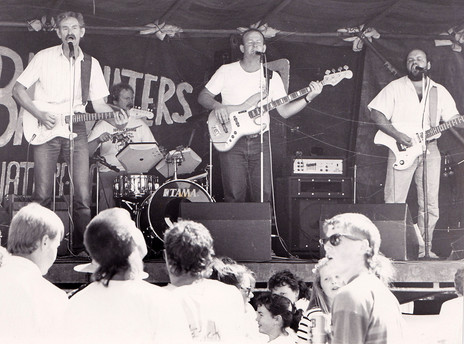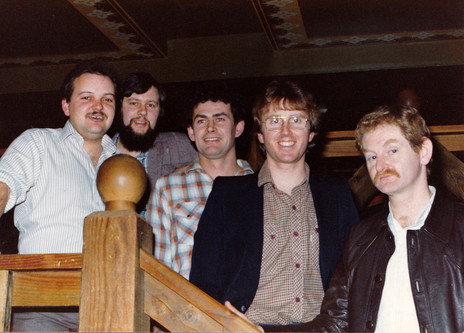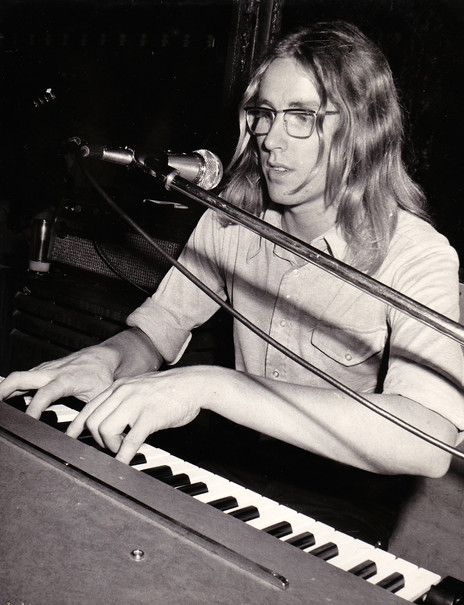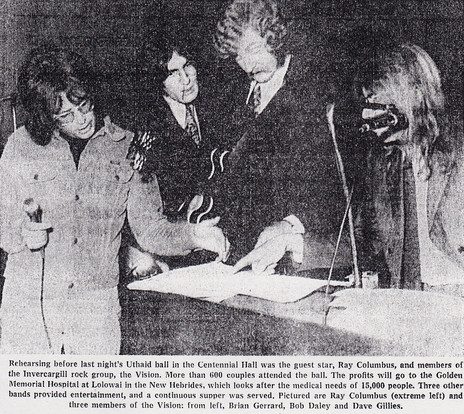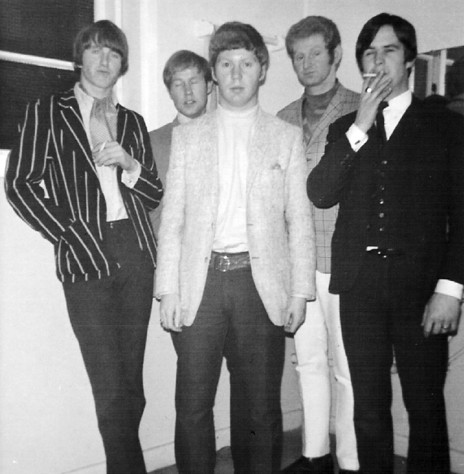At their peak “the Vision” (the definite article became optional) were unquestionably one of the most polished resident covers bands in New Zealand, owning their own concert rig-sized sound system and lighting rig.
A total of 36 of the most accomplished musicians Southland has produced did their time in Vision. The longest serving member was lead guitarist Bob Daley, whose tenure stretched 41 years from 1969 until he retired from music in 2010.
For 16 of those years, from 1971 until 1987, Vision were the resident band at the Whitehouse Hotel, at Lorneville, on the northern outskirts of the Invercargill city boundary.
As Daley recalls, being a member of Vision in their heyday was more a lifestyle than a hobby.
On many nights, queues of people were blocking the main door at 7pm.
The band would rehearse at the Whitehouse lounge bar on Monday and Tuesday, and play gigs there every night from Wednesday until Saturday. Sunday was a day off, although band members and their families would frequently spend it socialising.
Crowds flocked to their gigs to hear the band’s polished and professional sets and enjoy the smoky, sweaty nightclub atmosphere of the bar, which was rebranded as the Rafters bar in 1979. Punters had to queue to get in, paying a cover charge at the door. The “full house” sign was usually out early in the evening. On many nights, band members would have to enter the building through the tradesmen’s entrance because queues of people were blocking the main door at 7pm.
“We worked hard in the old days out at the Whitehouse,” Daley told the Southland Times in August 2010. “But it was civilised hours. We were finished by 11 o’clock. Bands these days are only starting at 11 o’clock, and they’re carting gear everywhere.”
Daley said the time put into the band would have put terrible strain on band members’ relationships if the group hadn’t been so communal. It is no coincidence that at least three band members’ wives worked behind the bar at the Whitehouse during Vision’s residency. “It was a good social life,” he said. “They were wonderful days. I’ve had the best of it.”
Daley’s younger brother, Trevor, joined Vision as the drummer in 1981 and remained on the throne until the end. “All our chops were right up in those days,” Trevor Daley says. “When you’re working that hard you must be playing better.”
The 1980s were heady times. The Whitehouse was the place to be and Vision were the band to beat.
They sounded spectacular with their bottom-end bass frequencies thumping a dance impulse into punters’ chests and every precise top-note defined with crystal clarity. They were Invercargill’s undisputed rock stars of resident covers bands. Advertisements in The Southland Times and on the radio started referring to them as “the mighty Vision”. For many years that’s what everybody knew them as. Note-perfect arrangements, flawless performances and impeccable harmonies were crucial elements of Vision’s stagecraft. Hearing the Vision at their peak was like listening to the original recordings coming off the stage through the world’s biggest stereo system.
Gig earnings during the Whitehouse years enabled the band to accumulate their massive PA and maintain their signature high-quality sound. They were the first band in Southland to use a front-of-house mixed PA system. Initially former Vision bass player Tony Bennett was the sound engineer. He was followed in 1982 by Jeff Ross. When Ross’s older brother Tony left the band in 1989 – after 14 years as lead singer – it was an easy transition for the younger Ross to become lead vocalist as he already knew the entire repertoire.
Vision’s line-up changed as much to reflect the changing styles of music their career spanned as it did to replace musicians who had grown weary of the six-night-a-week commitment.
They constantly updated their material and had the knack of introducing songs just as they were reaching the top of the charts. This kept the band fresh to nearly 1000 people a week, 50 weeks a year.
From 60s psychedelic pop to 70s hard rock, from late-70s soul-funk to 1980s new wave to 1990s top-40 and beyond, Vision had it covered, immaculately.
When the progressive jazz-rock stylings of bands such as Blood Sweat and Tears and Chicago began to dominate AOR playlists in the mid-1970s, Vision simply employed a brass section, arguably reaching the zenith of their sound and musicianship during this era. Brass charts were scored by trombonist David Naylor, along with keyboardists Pat Houlihan and Dave Gillies.
THE WHITEHOUSE WAS THE PLACE TO BE AND VISION WERE THE BAND TO BEAT.
Although the brass section had a roster of five players, only three musicians played in the brass section on any given night. When one had other commitments and couldn’t make the Vision gig, another on the roster would step in. All five – Naylor, Kevin Dell (trumpet), Trevor Tattersfield (trumpet), Dave Hughes (trumpet) and Brian Eckersley (trombone) – were top musicians who went on to tour the United States with the National Band of New Zealand.
Vision’s reputation as a supergroup had begun from the outset, in July 1969.
One of the most polished bands in Invercargill that year was The Farthings, whose line-up included Bob Daley on guitar, Warren “Bricky” McLew on drums and Dave Gillies on keyboards. Also on the bill that night at Invercargill’s YMCA was a band that included young vocalist Dave Kennedy. (Four years later Kennedy would enter New Zealand’s pop charts as the singer of Christchurch band Link’s hit single ‘Only Time Could Let Us Know’, which he co-wrote with Gillies; it reached No.17 in 1973.)
Kennedy approached Daley and asked him, “are you interested in doing something?”
Daley’s answer was yes and he and Kennedy, along with McLew, Gillies and sax player/vocalist John Kennedy became “The Vision” or, more colloquially, “Vision”. This ace line-up quickly became known as the city’s new supergroup.
All highly proficient musos, Vision was the backing band for hire for a long list of high-profile New Zealand entertainers and shared the stage with many of the country’s top touring bands. Among them were Vaughan Laurence, Suzanne, Shane, Ray Columbus, Craig Scott, Chapta, The Kal-Q-Lated Risk, The Chicks, Tap Heperi, Hogsnort Rupert’s Original Flagon Band, Eddie Low and The Dedikation.In their first years Vision played regular gigs throughout Southland, at the RSA Danceland, Otautau Hullaballo, Newfield Tavern, Civic Theatr,e and Riverton Carnival. Their Invercargill gigs were packed out most Saturday nights, sometimes with a busload of Riverton punters arriving. They performed at the Manapouri Motor Inn, a popular venue when the Manapouri power scheme was being built.
Around 1971 the regular RSA dances folded so Vision moved to the Whitehouse Hotel at Lorneville to begin what would be a 16-year tenure. In the early 1970s, however, the band did not play exclusively at the Whitehouse. They remained in demand as the backing band for visiting artists.
Among them was Ray Columbus, who they backed at the Uthaid Ball in Invercargill’s Centennial Hall in August 1972. Three other local bands also played that gig, held to raise funds for a hospital in the New Hebrides. The same year Vision played a blues-rock festival with Lutha, and backed the Johnny Devlin Fun Show with guest vocalist Joy Pirie, who in 1975 was the senior overall winner at the New Zealand Gold Guitar Awards in Gore.
In September 1973 the band took a break from the Whitehouse residency to play a two-week gig as house band on a Pacific P&O cruise, aboard the SS Oronsay. Keyboardist Pat Houlihan had other commitments so hot young Invercargill musician Roger McLachlan became a band member for the duration of the cruise. Two years later McLachlan was in Australia’s Little River Band, playing bass on their first two albums and, famously, as a Melbourne-based session musician in the 1980s, crafting the melodic fretless bass intro to John Farnham’s hit song ‘You’re the Voice’.
The Southland Musicians Club history book 45 South – In Concert, written by Neil McKelvie (2006), records that the cruise was the making of a great covers band. Vision gigged their way from Auckland to Suva, to Noumea, Lautoka and back to Auckland. The cruise included a stopover in Sydney where Vision checked out the Sydney scene. Vision’s repertoire on the ship included songs by Carole King, Three Dog Night, David Bowie, Uriah Heep, Crosby Stills and Nash, Chicago and Blood Sweat and Tears. They played to the same captive audience of 1200 young people for two weeks straight and were reportedly “buggered” by the time they got back, but musically much sharper for the experience.
VISION WAS THE BACKING BAND FOR HIRE FOR A LONG LIST OF HIGH-PROFILE NEW ZEALAND ENTERTAINERS.
Polished, well practised and utterly professional back on home turf at Lorneville, Vision stepped up their act and were well on the way to becoming a household name in Southland, staying on top of the local game throughout the 1970s and 80s. With their sparkling repertoire of note-perfect top-40 hits Vision were the people’s favourite as well as a benchmark to which other Southland musicians could aspire.
In 1974 Vision added to their impressive list of support gigs when they backed Donna Lynton, a member of the American vocal group The Ronettes, and played on the Dunedin bill with their idols Blood Sweat and Tears. Also in Dunedin, Vision played on South Pacific Television’s 1977 telethon.
The band held a 15-year reunion at the Ascot Park Hotel in 1984, in front of 400 fans. The milestones kept ticking over. In April 1989 Vision marked 20 years with a celebration show at the Ascot Park Hotel. Among the 500 people there were 25 ex-Vision band members. The same year Vision won 4ZA radio station’s Super Southlander Award.
In 1994 Vision marked 25 years and, in 2019, the magical 50-year mark was celebrated in style with a full house at the Invercargill Workingmen’s Club Corinthian Convention Centre.
